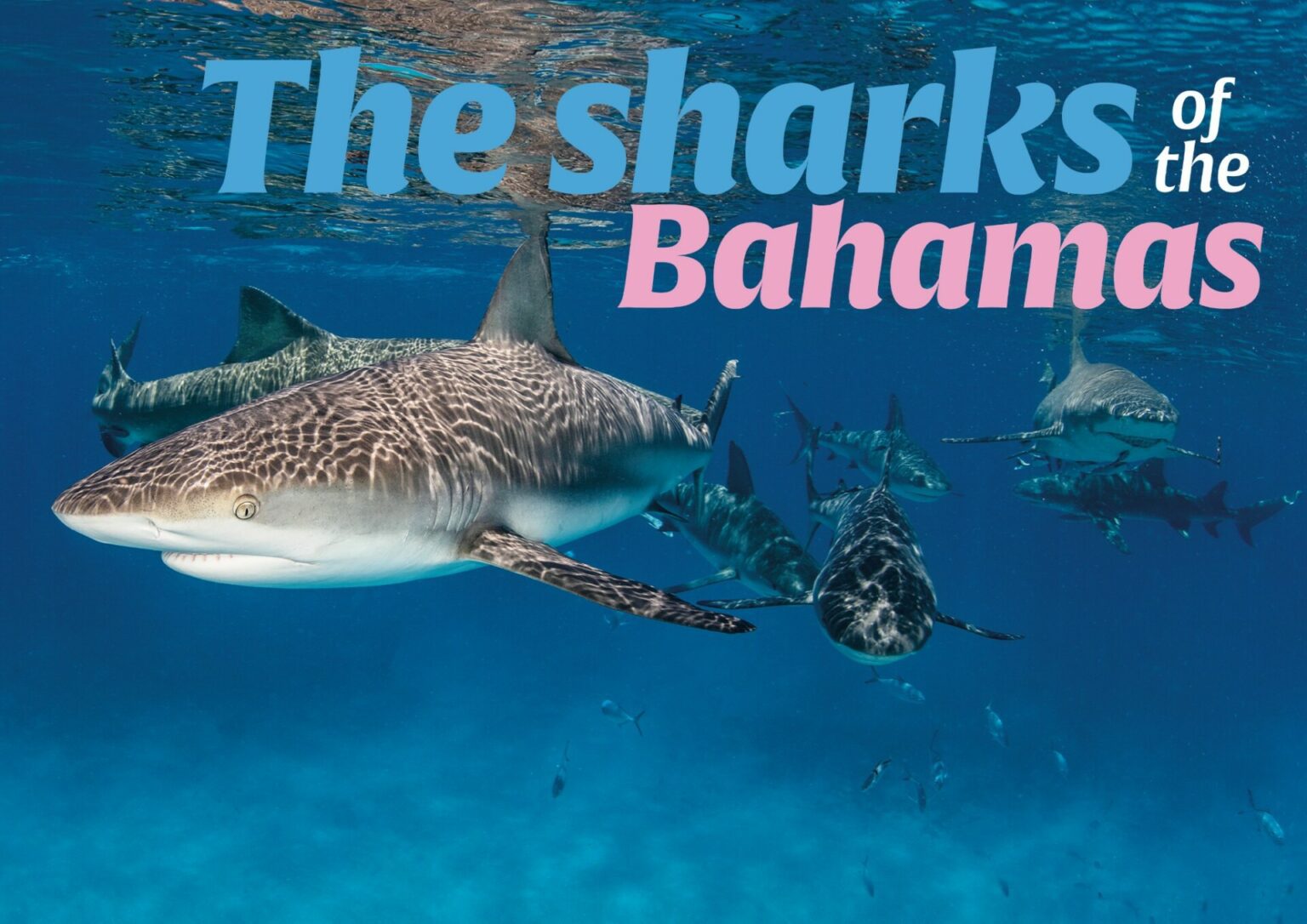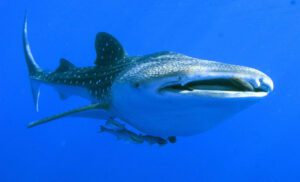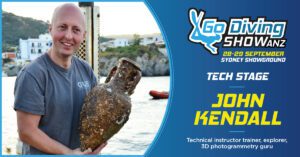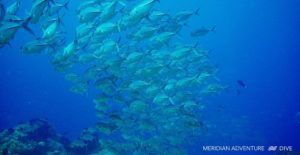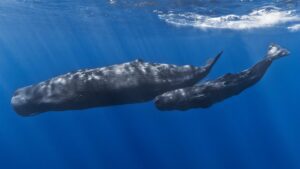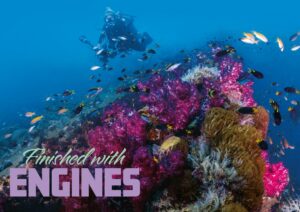Byron Conroy travelled to the Bahamas with one aim in mind – to get some high-quality shark photographs. In this two-part feature, we follow his 14-day adventure on the Bahamas Master liveaboard that more than delivered
Photographs by Byron Conroy
I have been diving for many years, and completed around 4,000 dives in every type of ocean environment imaginable – most of it with my trusty camera. However even with all of these dives, in all of the different locations, I barely had any shark photos that I was very pleased with.
It’s a sign of the modern world in which we live – shark populations all over the world have been decimated.
Even in locations that are famous for sharks, such as Cocos islands, the Maldives, etc., the sharks I saw have always been timid and fearful of people and not in the large numbers as described in historical record.
I am a keen researcher of photography, always looking on platforms such as Instagram for the types of underwater photos people are taking and then researching the destinations, dive sites and other information.
So often when I had seen a great shark photo with awesome interaction and close to the camera, the shots all seem to come from one place – the Bahamas
In 1993, the small island chain of the Bahamas banned longline fishing, which limited shark fishing and helped to protect the 40 different species that call the area home. Then in 2011, the nation completely banned all shark fishing and also prohibited the sale and import of shark products.
This bold step has caused a shark dive tourism boom to the country – in 2014, shark and ray tourism was found to have generated US$114 million to the economy of the country. The Bahamas have calculated that each live shark is generating up to US$250,000 to the economy annually and that they are far more valuable alive than dead.
The waters of the Bahamas are crystal clear and the islands have picturesque white sand beaches, but it was this boom in shark tourism and the plethora of underwater photos that drew me to see just how good the diving was.
There are many options to visit the Bahamas, but all land/ day boat options pretty much fix you into one area for diving, and only diving with one of the various shark types in the island chain. The country is spread over 3,000 islands and over a distance of almost half a million square km, so for me the best way to visit was by liveaboard.
The itinerary I chose was a 14-day, Ultimate Bahamas trip onboard the Bahamas Master (masterliveaboards.com) covering all of the main areas for diving in the country.
Master Liveaboards operate from Freeport, Grand Bahama, one of the larger islands and easily accessible with a short flight from Miami on the US mainland.
Flights run daily from Miami and other cities within Florida, bringing in tourists for the tropical beaches. Freeport is the best place to operate the liveaboard from, as it allows for reasonable access to each of the main diving areas depending on the itinerary.
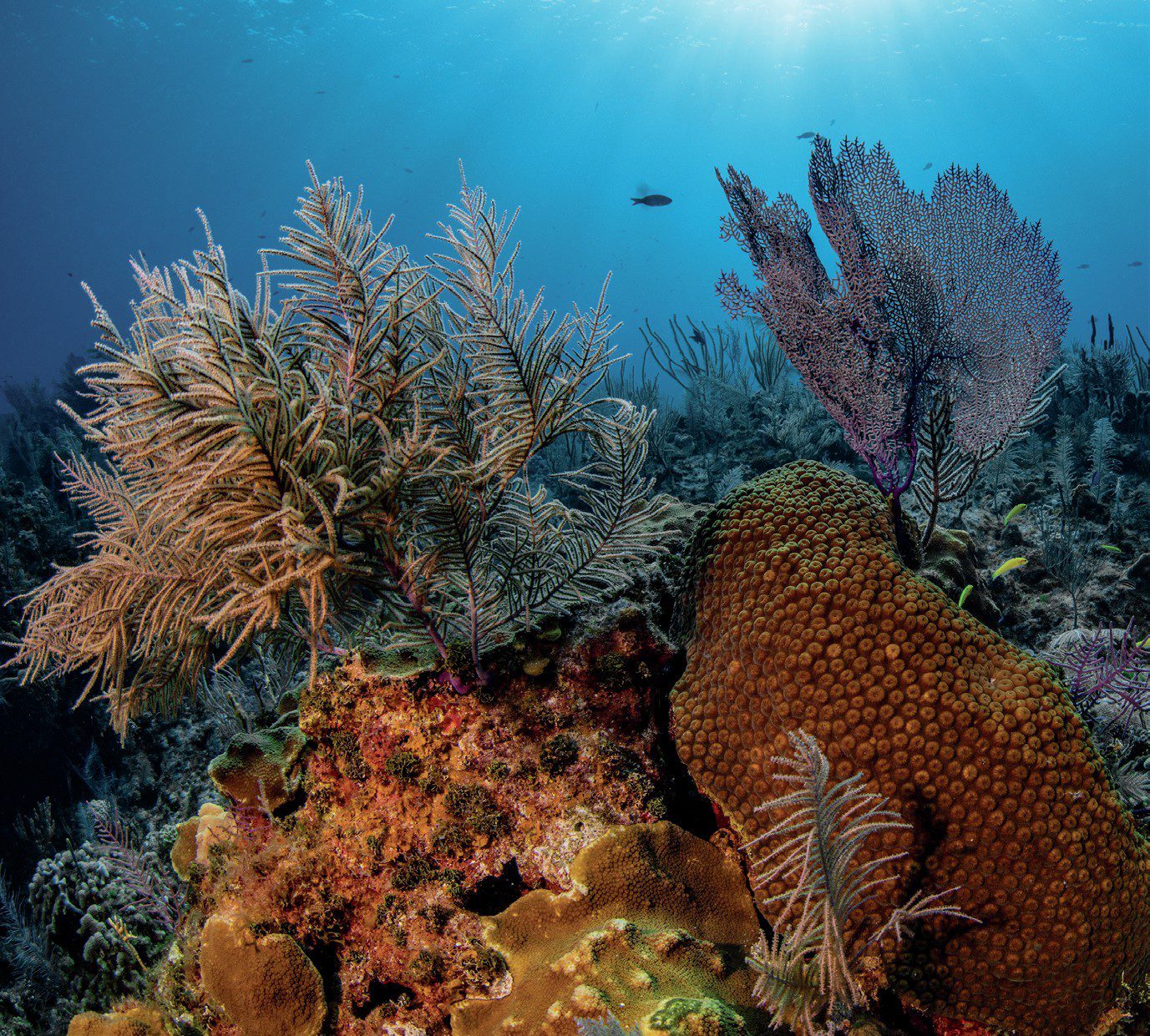
I had chosen to fly in a day early before the liveaboard as I was coming from Iceland and wanted to ensure all luggage, etc, had arrived and I had managed to soak off any jet lag before boarding. We were picked up by the team from Master Liveaboards in the afternoon and we made our way over to the boat to meet the crew and the other guests.
After a little welcome meeting, we were shown to our cabins, all comfortable cabins with ensuite bathrooms and having just had a recent makeover. Later in the evening our leader and cruise director Dylan from South Africa was able to give us a more-detailed dive briefing and an introduction to shark diving and how to behave with these awesome creatures.
The briefing was unlike any boat briefing I’ve had before – we discussed sharks by their names, not species names but individual names that the crew had given them. We discussed what to do when the sharks touch you…
Would there really be that many, and would they really come that close?
Diving the island of New Providence
After an overnight steam we awoke to views of the island of New Providence, better known after the name of the capital city of Nassau. This area was famous for the Caribbean reef sharks that take home in the area.
The island has a deep trench close to the shore called Tongue of the Ocean – this deep water meeting the shallower reefs makes it the perfect home for reef sharks, able to cruise in the deeper cooler waters of the trench and then come to the reef to feed on the fish.
The area is one of the more famous for shark diving, being the capital city and well developed there have always been a lot of tourists there, so as such its became a Mecca for divers, with its combination of reefs and shipwrecks and land-based dive operators.
A combination of repeated daily diving on the same sites, and interaction of shark feeding on these sites and the protection of sharks, has created a population of sharks that is very tame compared to most places, and also strong in numbers.
Did you know?
The sheer size of the Bahamas is breathtaking. You’ll find the third-largest barrier reef offshore, plus deep walls, wrecks, blue holes, tunnels, caverns and some of the best shark diving in the world. Waters off New Providence provide drop-offs that are close to shore, blue holes, caves, historical wrecks and thrilling shark diving.
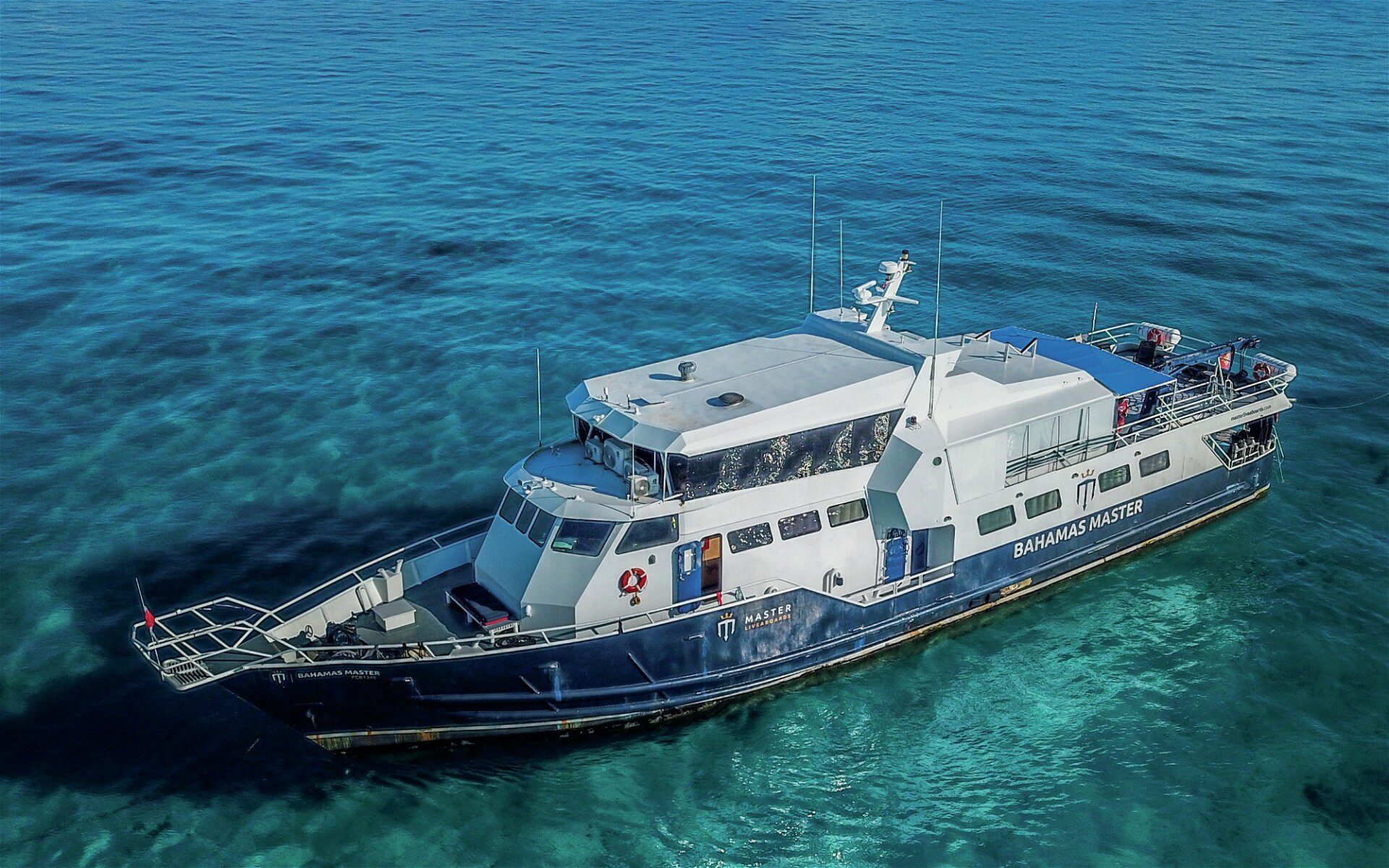
Our first dive was in the afternoon, a lovely check out dive on a shallow small reef surrounded by the most wonderful white sand, a perfect place to check out equipment and iron out any weighting issues.
In the afternoon we did one of the local reefs where we got our first glimpses of the sharks that inhabit the waters, reef sharks cruising over the shallow corals and then dropping off into the deeper water.
Because the trip would be mainly a combination of reefs and specific shark dives, we took the opportunity to spend day two diving the famous wrecks of Nassau. Dive one was the Ray of Hope wreck, a wreck made famous for the photos of divers on the bow surrounded by sharks.
Our group saw several sharks patrolling the wreck in the blue and cruised around the wreck checking out the amazing views in 40 metres of visibility.
We also had the opportunity to dive the most aesthetically pleasing wreck in the Bahamas, the Sea Trader.
A barge that is parked on the sandy bottom with two-thirds of the wreck on the sand with the front third hanging over the slope where the sand drops off into infinity, making the wreck look like a ghost ship hurtling forwards off the edge of the reef and deep into the ocean.
We took a dive on one further wreck, the Twin Sisters, before beginning the overnight steam over to Cat Island for the second part of our trip.
Did you know?
Oceanic whitetip sharks are named for the distinctive white tips on their fins and are found all over the world’s oceans. They are a medium sized shark averaging three metres in length and weighing up to 170kg.
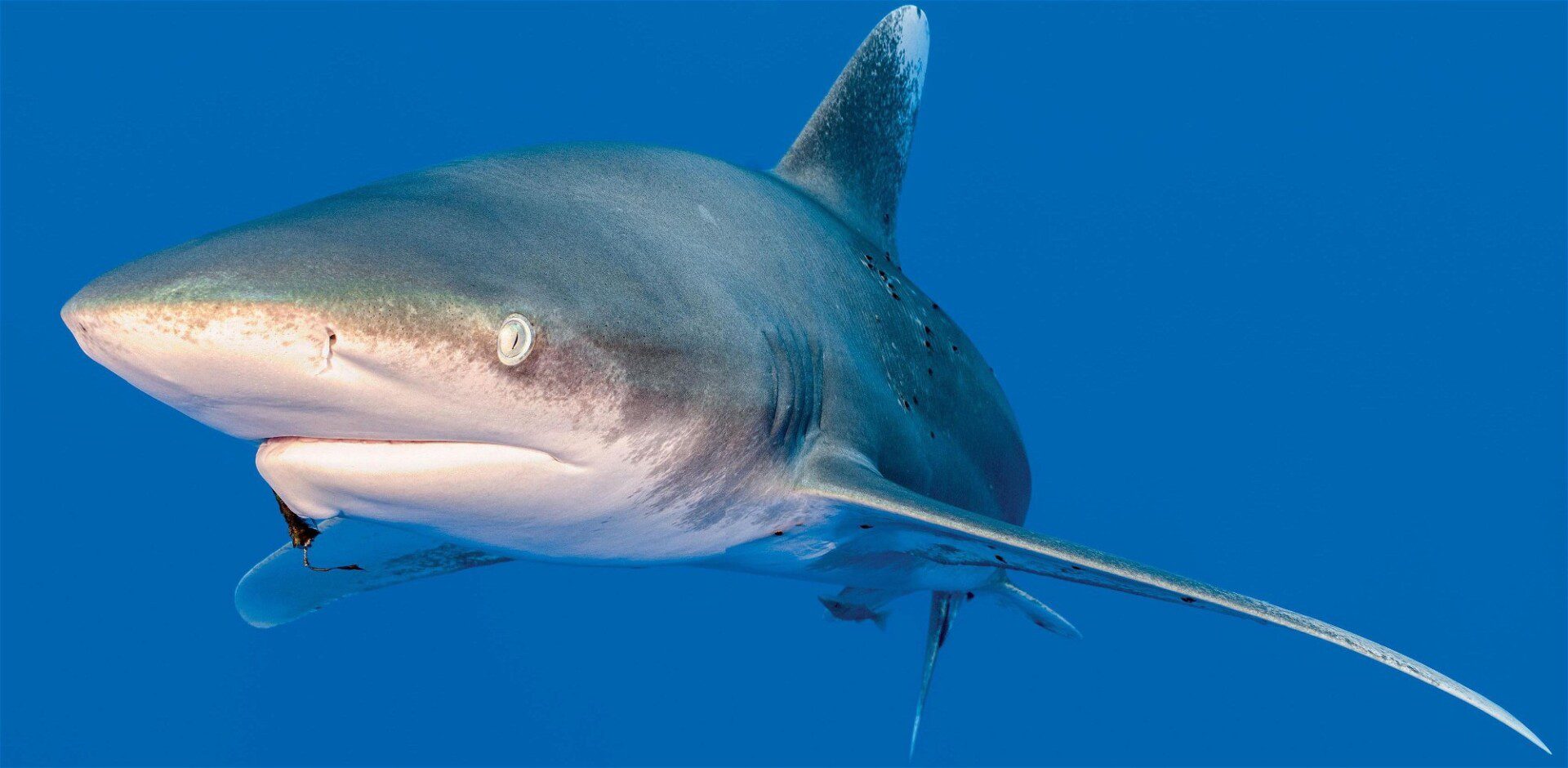
Cat Island, oceanic whitetips
Now, almost all European divers have been to the Red Sea, and specifically the Deep South in autumn, where you can get a glimpse of oceanics.
I myself have been there to see them, but after two weeks of diving the area and waiting for them, I only have one shot. So although they are there, they are still very rare and even if you are lucky to see one, it will likely be only one and for a fleeting pass.
During the months of April and May, tuna migrate through the deep waters of Cat Island on their annual migration. This influx of tuna brings with it one of the world’s most-exciting but elusive sharks, the oceanic whitetip.
This shark is a true pelagic species usually found in the open ocean as a solitary specimen. This species used to be very common and distributed evenly across all of the world’s tropical deep waters, but this made it vulnerable to fishing and as such its population numbers have crashed all over the world.
After a 20-hour steam, we arrived at Cat Island to the most-enticing-looking ocean, the sea was flat calm and had a rich deep blue azure colour. Dylan began the briefing for the oceanic whitetips, it would be a baited dive over very deep water.
The bait box would be on a line at a depth of around 20m, with one of the Divemasters manning the line and jerking it to lift the bait box up and down and create a light chum in the water.
The crew threw the baited box overboard 30 minutes before the dive and allowed it to suspend from its buoy to try and attract the sharks before we got it. We were diving in two groups of six and diving with only one group in the water in order to keep things calm and stress free underwater.
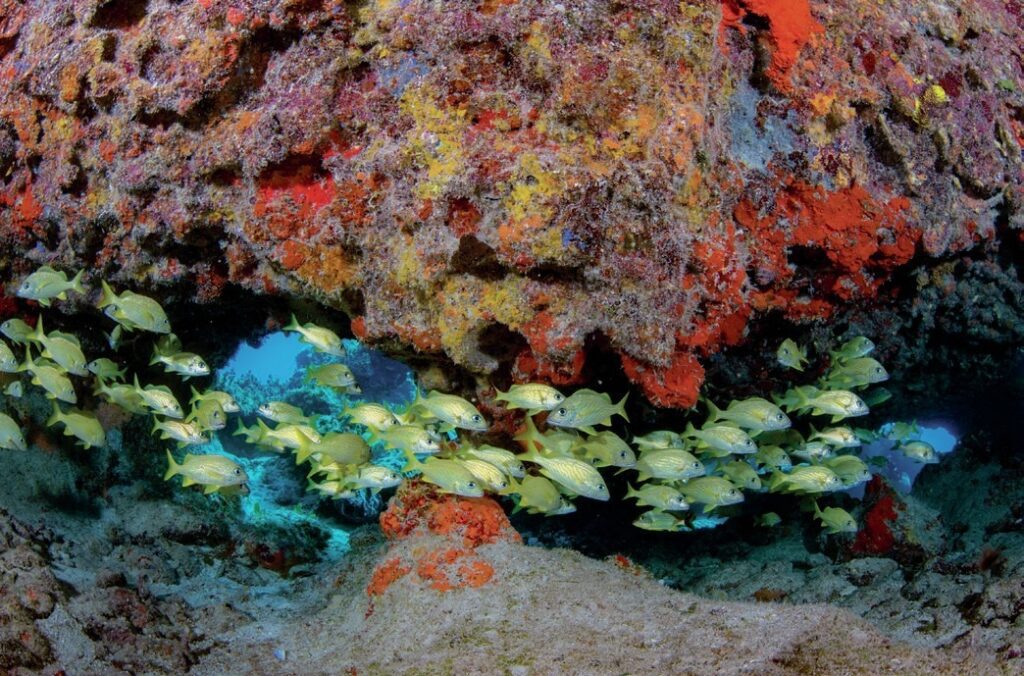
My group was group two. I headed to the sundeck to watch the other divers from the surface, the water was so clear you could see the six of them in the blue forming a circle around 15 metres away from the baited line.
After an hour they returned, but had not seen any sharks. As they swam on the surface back to the boat, one of the crew shouted ‘shark’ and there she was, an elegant three metre long oceanic whitetip 1m from the surface and cruising between the divers… they had arrived!
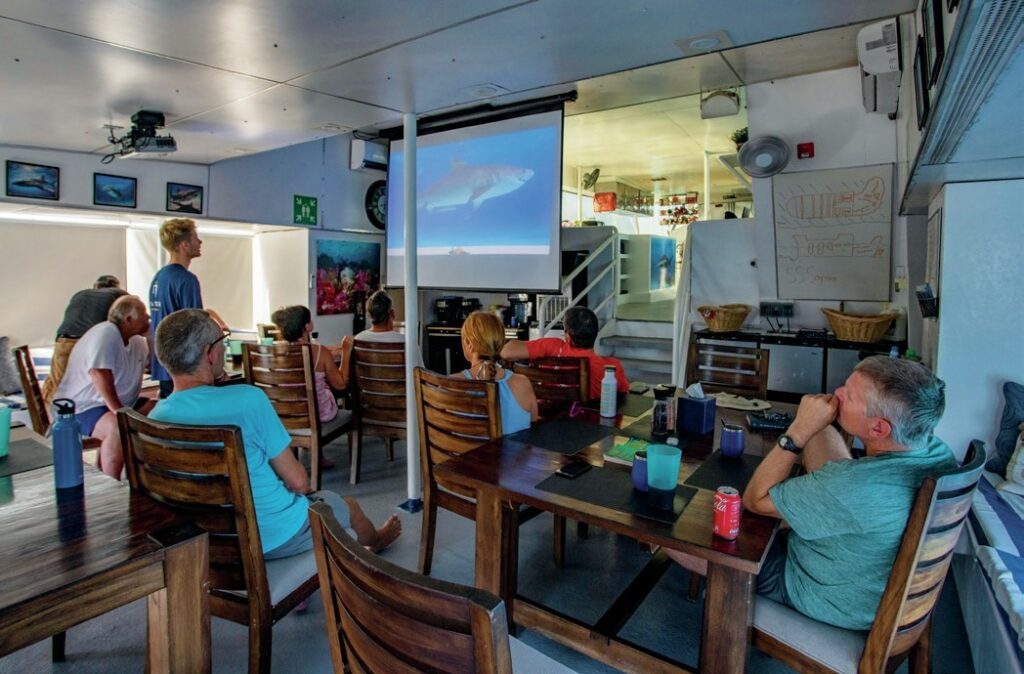
My time came to dive and was can I say, it was just incredible – for 90 minutes we dived between 5m and 10m of depth, hovering over the most-incredible deep blue water and having oceanic whitetips come and cruise in between us all.
The longer we stayed, the more relaxed it all became, the sharks got more and more comfortable with both us and the whole situation, and came closer and closer. Within the first ten minutes, it had already exceeded two weeks of underwater time in the Red Sea.
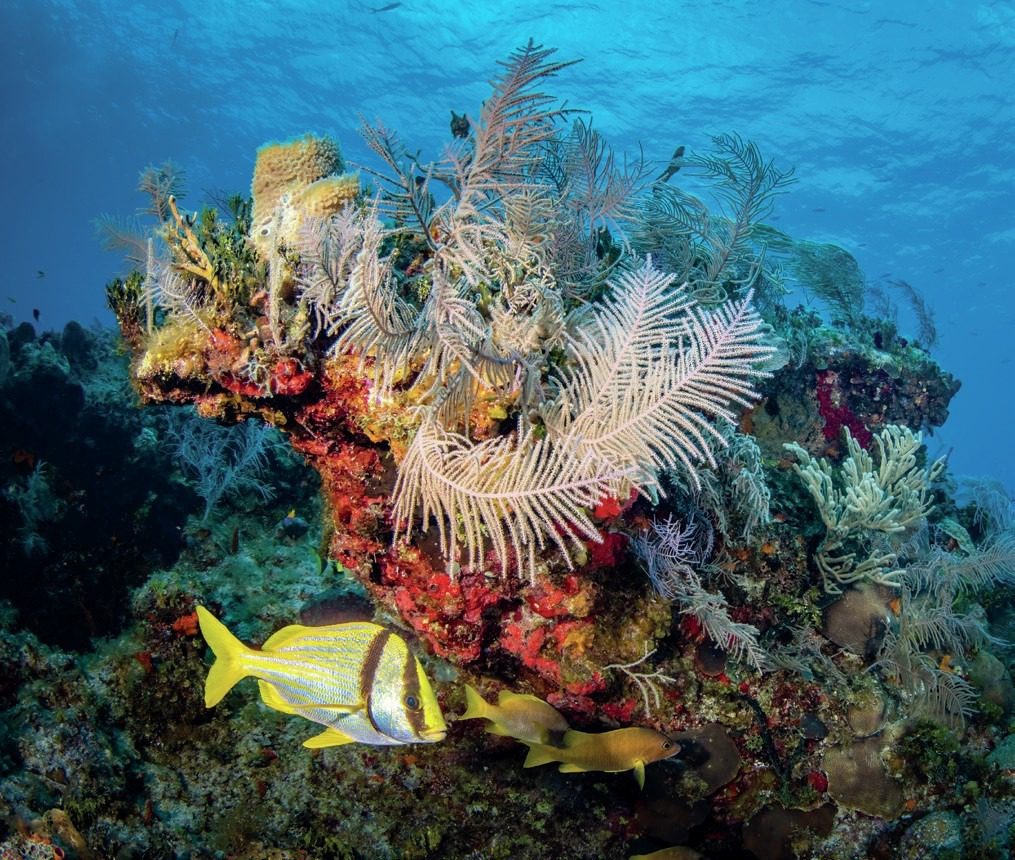
Over the next few days we continued this amazing experience and it only grew better, for the final dive we did it late in the day and the sun was sitting lower in the sky.
This gave us the most incredible light, with the rays punching trough the surface and illuminating the backs of the passing sharks. We had seven oceanics all to ourselves for the whole 90 minutes, more than one each.
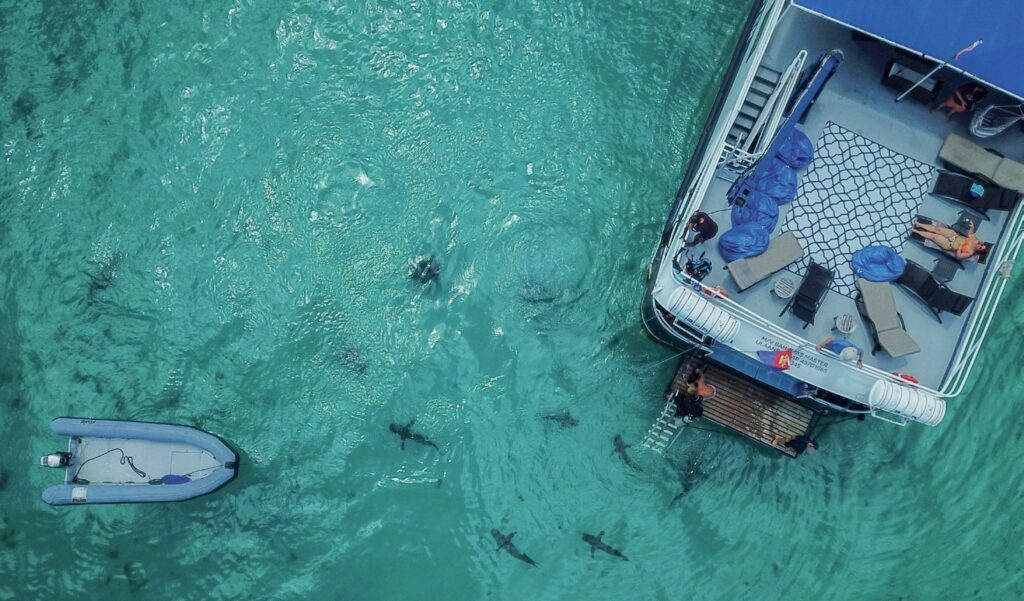
They kept passing between us and all around the line. There really can be no better place on earth for oceanic diving than this, the most natural of surroundings with not another boat even to be seen on the horizon and the whole encounter entirely on the terms of the animal – just the way it should be.
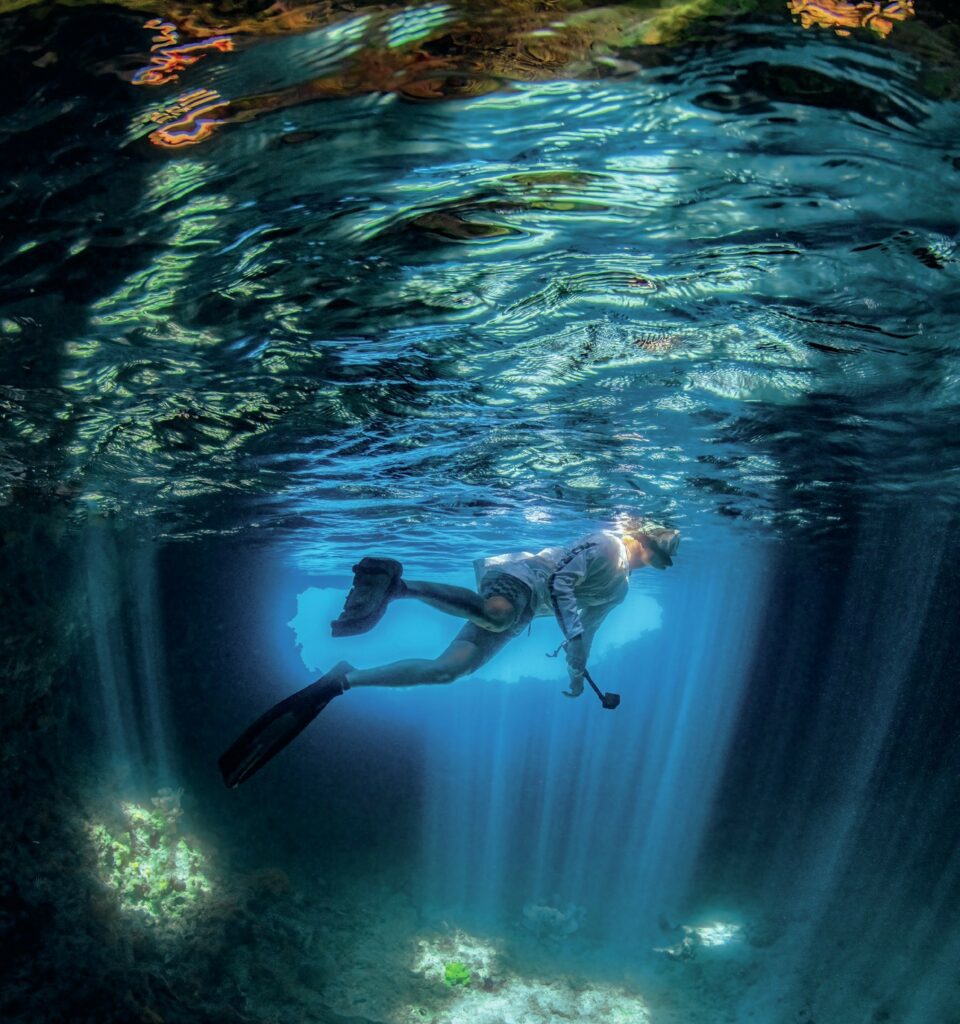

Thunderball Grotto and Pig Beach
Because this was a 14-day trip, it’s nice to take an off day from the diving and we headed over to Exuma, an area in the Bahamas famous for two in-water but non-diving activities. Firstly, we headed over to Pig Beach, a local beach made famous by its population of pigs that live on the beach all year round.
Tourists started coming to the beach by boat to see the pigs and soon started throwing food over board for them, resulting in a group of pigs that spend most of their day swimming around in the beautiful shallow waters before retiring to the beach for sunbathing.
This was the first time I had snorkelled with pigs, and I was surprised how big they were. My research had made them look like cute little piglets, but many of them were well over 100kg and quite ferocious when it came to feeding time.
After a wonderful lunch on board the Bahamas Master cooked up by Chef Mark, we headed out by dinghy to our next stop, Thunderball Grotto, made famous for being used in multiple movie scenes, including the James Bond movie of the same name.
The Grotto is a small flooded cave area and the ceiling has a hole in it that allows natural light to stream through, creating an underwater column than looks amazing when freediving to the bottom.
This article was originally published in Scuba Diver UK #77
Subscribe digitally and read more great stories like this from anywhere in the world in a mobile-friendly format. Linked from The Sharks Of The Bahamas
